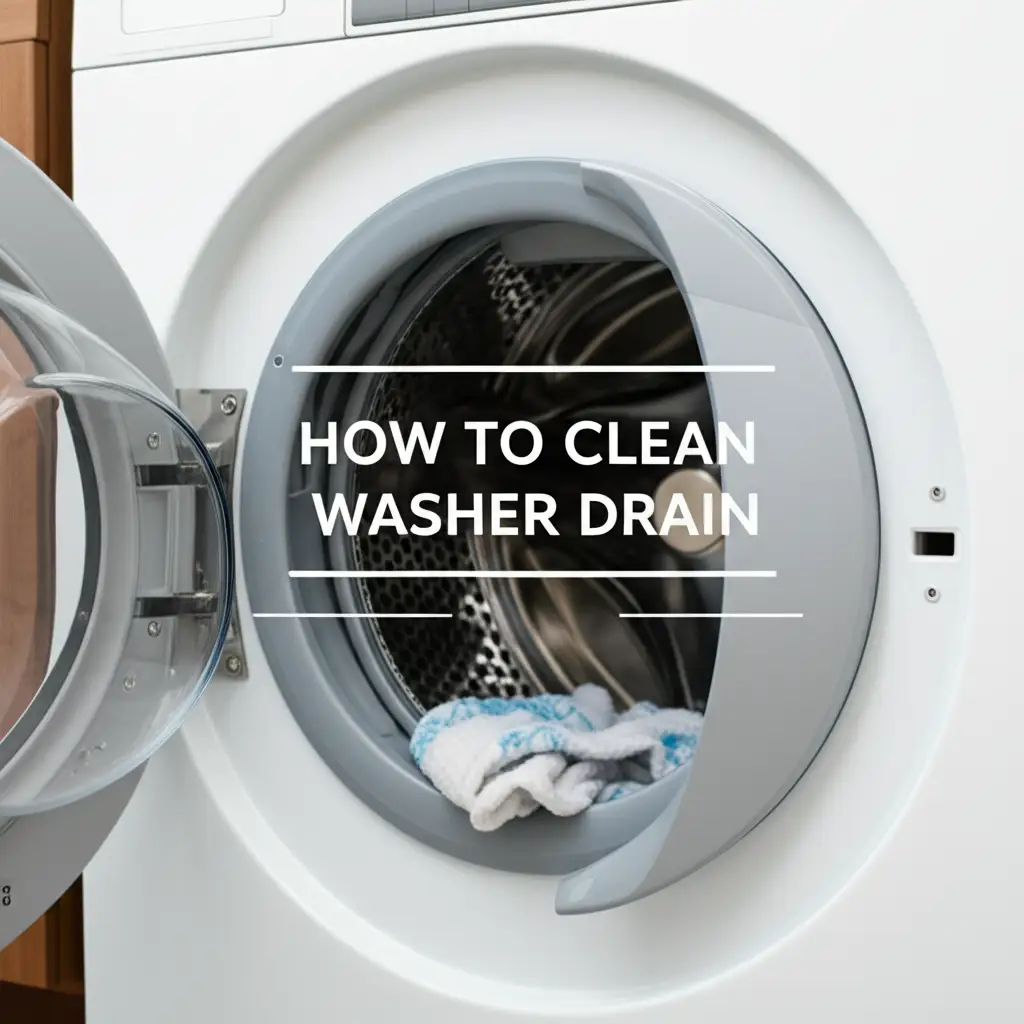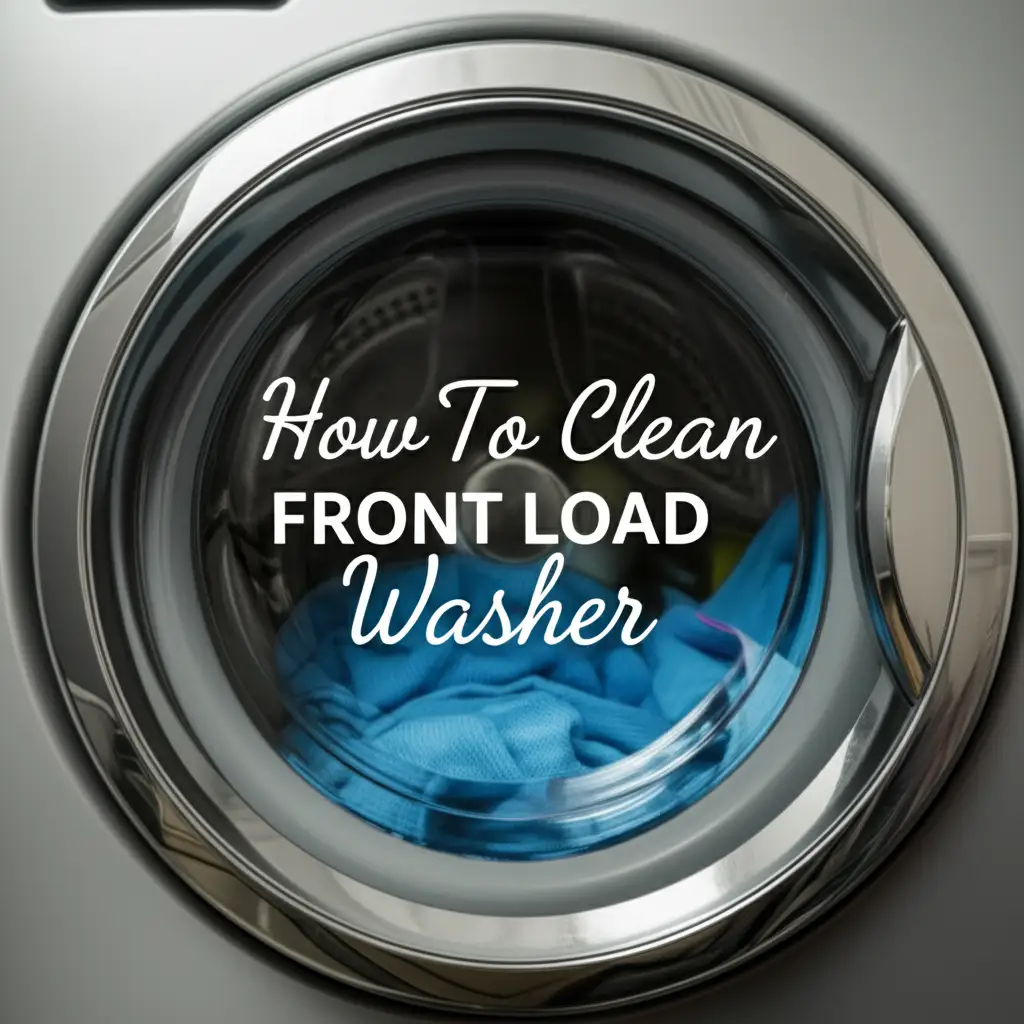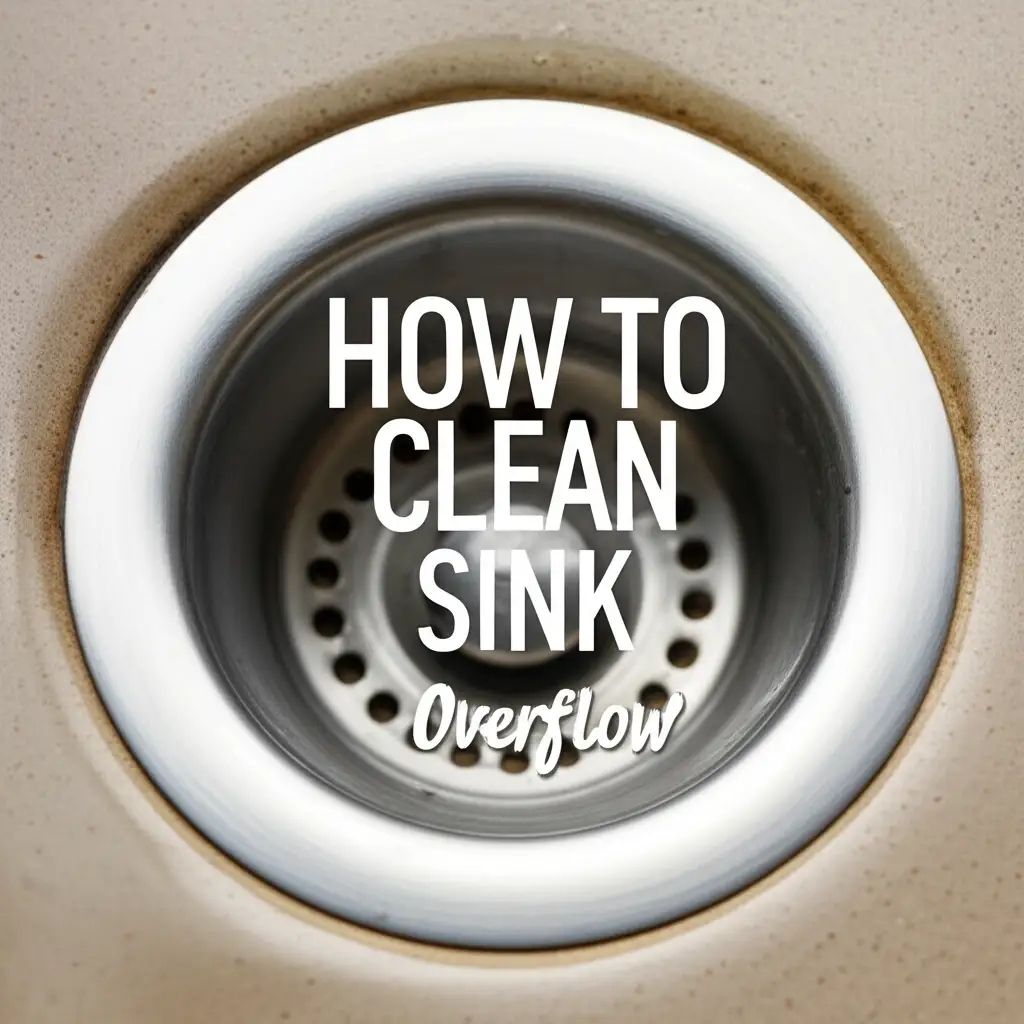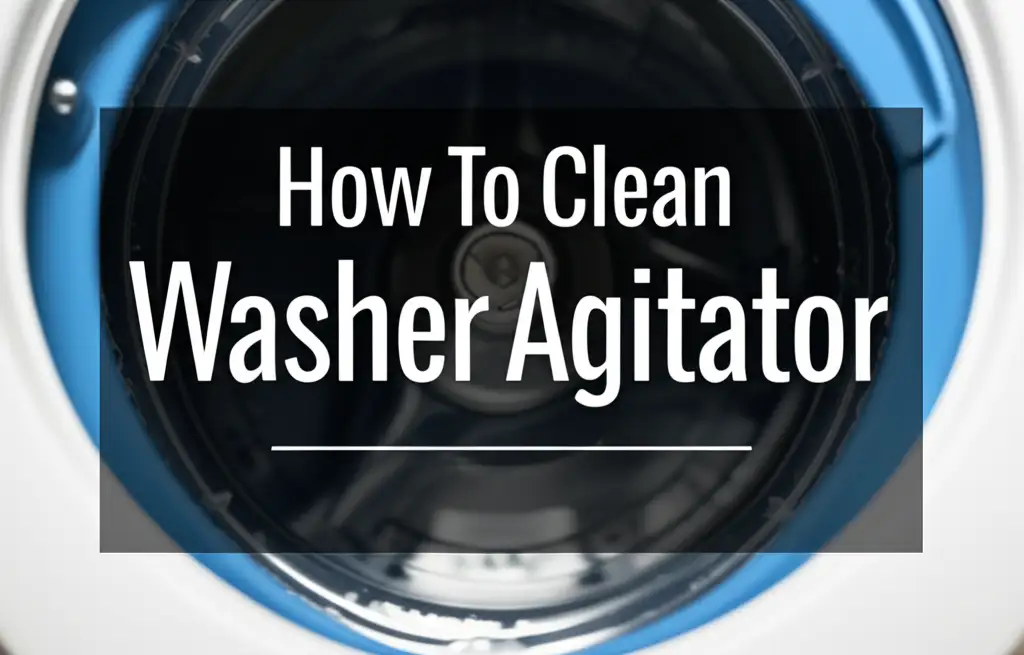· Home Cleaning · 19 min read
How To Clean Washer Drain

Keep Your Washer Drains Flowing Smoothly
Have you ever noticed standing water around your washing machine, or perhaps a strange smell lingering in your laundry room? These are common signs that your washer drain might need attention. A clogged or slow-draining washing machine can cause big headaches. It affects how well your washer works and can even lead to water damage.
I understand the frustration a faulty drain can bring. It interrupts your laundry routine and creates a mess. This guide will show you exactly how to clean your washer drain. We will cover common causes of clogs and effective DIY cleaning methods. Let’s make sure your laundry days are productive and hassle-free.
Takeaway
- Regularly inspect your washer’s drain hose and standing pipe.
- Use natural solutions like vinegar and baking soda for minor clogs.
- Address foul odors quickly to prevent larger drain issues.
- Understand when to use a drain snake for stubborn blockages.
- Implement preventive measures to keep your washer drain clear.
To clean your washer drain, first, identify the type of clog (lint, soap scum, or foreign objects). Then, use a combination of natural solutions like hot water, baking soda, and vinegar, or mechanical methods such as a drain snake or wet/dry vacuum, ensuring you disconnect power and water lines for safety.
Understanding Your Washing Machine Drain System
Before you start cleaning, it helps to know how your washing machine drain system works. Your washer expels wastewater through a flexible drain hose. This hose typically empties into a standpipe or directly into a utility sink. The standpipe connects to your home’s main drainage system.
Over time, this system can face blockages. Lint from clothes, soap residue, and sometimes small forgotten items can build up. This build-up slows drainage or stops it completely. Knowing these components helps you pinpoint where the problem lies.
The standpipe often has a P-trap, similar to under a sink. This trap holds a small amount of water to prevent sewer gases from entering your home. If this trap gets clogged, it can also cause drainage issues. We will focus on clearing these common problem areas.
Regular checks of your drain hose and standpipe can save you trouble. Look for kinks in the hose or visible debris near the opening of the standpipe. Early detection of issues makes cleaning much easier.
Common Signs and Causes of a Clogged Washer Drain
Detecting a clogged washer drain early prevents bigger problems. Pay attention to how your washing machine drains. Early signs can save you from a flooded laundry room. I always look for these indicators first.
One clear sign is water backing up in the standpipe or utility sink. This happens after the wash cycle finishes. If water overflows, your drain is definitely blocked. Another sign is slow drainage; the water takes too long to disappear.
You might also notice a foul smell coming from the drain. This smell often means mildew or stagnant water. Lint and soap scum can create a breeding ground for bacteria. For issues with bad smells, you might find useful tips on how to clean a smelly washer and how to clean washer smell.
The main culprits for washer drain clogs include:
- Lint and Fabric Fibers: These shed from clothes during washing. They combine with detergent residue to form thick sludge. This sludge easily sticks to pipe walls.
- Soap Scum and Detergent Residue: Liquid detergents and fabric softeners can leave a sticky film. This film traps lint and other debris. Over time, it hardens and reduces pipe diameter.
- Foreign Objects: Small items like coins, keys, or even socks can escape the washer drum. They then get caught in the drain hose or trap. These items create immediate blockages.
- Grease and Oil: While less common than lint, some clothes carry grease. This grease can harden in pipes, especially in cold areas. It acts as a magnet for other debris. Cleaning grease from drain pipes typically involves different methods.
Understanding these causes helps you choose the right cleaning method. It also helps you take steps to prevent future clogs. Regular maintenance is key to keeping your washer drain clear.
Essential Tools and Safety Precautions
Before you begin cleaning your washer drain, gather your tools. Having everything ready makes the job smoother. Safety is also very important when working with drains and water. Always prioritize your well-being.
Here are the essential tools you will need:
- Buckets or large towels: To catch any water that spills during the process.
- Pliers or a wrench: For disconnecting hoses or pipes if needed.
- Gloves: To protect your hands from grime and cleaning solutions.
- Safety goggles: To shield your eyes from splashes.
- Plunger: A basic tool for loosening minor clogs.
- Drain snake or auger: For reaching deeper, more stubborn blockages. A hand-cranked model is usually sufficient. You might use this type of tool for a general clogged drain.
- Wet/dry vacuum: Excellent for sucking out standing water and some debris.
- Baking soda and white vinegar: Natural, effective cleaners for minor clogs and odors. For more tips on using natural cleaners, check out how to clean sink drain with vinegar.
- Large brush or bottle brush: For cleaning the inside of the standpipe or hose.
Now, for the critical safety precautions:
- Unplug the washing machine: Always disconnect the power cord from the outlet. This prevents accidental activation. It also protects you from electrical shock.
- Turn off water supply: Close the hot and cold water valves behind your washing machine. This prevents water from flowing into the machine while you work.
- Protect the floor: Place old towels or a large bucket under the drain hose connection. This catches any residual water when you disconnect the hose.
- Ventilate the area: If using chemical drain cleaners (though natural methods are preferred), ensure good airflow. Open windows or use a fan.
- Avoid mixing chemicals: Never mix different drain cleaning products. This can create dangerous fumes or reactions. Stick to one method at a time.
Taking these steps ensures a safer and more effective cleaning experience. You are now prepared to tackle that clogged washer drain.
Step-by-Step Guide to Cleaning Your Washer Drain Hose
The washer drain hose is often the first point of blockage. Lint, soap scum, and small objects frequently accumulate here. Cleaning it is a straightforward first step. I always start here because it’s the most accessible part of the drain system.
Disconnect Power and Water: First, unplug your washing machine. Then, turn off the hot and cold water supply valves. These are usually located behind the machine. This step is crucial for safety.
Locate and Disconnect the Drain Hose: Find the flexible drain hose at the back of your washer. It usually connects to a standpipe or hooks over a utility sink. Carefully pull the hose out of its connection point. Be ready for some residual water to spill out. Keep a bucket and towels handy.
Inspect the Hose for Kinks or Clogs: Straighten the drain hose. Look for any visible kinks or blockages. Feel along the length of the hose for hard lumps. These lumps often indicate a buildup of lint or trapped objects.
Clear Minor Blockages:
- Manual Removal: If you see any debris near the ends of the hose, try pulling it out by hand (wearing gloves).
- Flush with Water: Take the hose outside or to a large utility tub. Run water through it from a garden hose. This helps dislodge loose debris. You can also try using a strong jet of water to push out clogs.
- Shake and Flex: Gently shake and flex the hose to loosen any stuck material.
Address Stubborn Hose Clogs:
- Vinegar and Baking Soda Soak: If flushing does not work, mix 1/2 cup baking soda with 1 cup white vinegar. Pour this mixture into one end of the hose. Let it sit for 30 minutes to an hour. The fizzing action helps break down soap scum and grease. Follow with hot water. For more information about using vinegar for cleaning, see how to clean washer with vinegar.
- Drain Snake: If the clog persists, gently insert a drain snake or small auger into the hose. Twist it slowly to break up or pull out the blockage. Be careful not to puncture the hose.
- Wet/Dry Vacuum: Attach the wet/dry vacuum hose to one end of the washer drain hose. Seal the connection as best you can with a towel. Turn on the vacuum to suction out the clog. This method works very well for removing standing water too.
Rinse and Reconnect: Once clear, thoroughly rinse the drain hose with clean water. Reconnect it securely to the standpipe or utility sink. Ensure there are no kinks in the hose. Then, turn your water supply back on and plug in the washer. Run a short rinse cycle to check for proper drainage.
By following these steps, you can often resolve most washer drain issues. This focuses on the primary culprit for many drainage problems.
Cleaning the Washer Standpipe and P-Trap
If your washer drain hose is clear, the problem likely lies in the standpipe or the P-trap below it. This part of your home’s plumbing connects to the main drain system. Blockages here can be more stubborn but are still manageable. I often find a mix of lint and soap scum causing issues in this area.
Access the Standpipe: The standpipe is the vertical pipe where the washer drain hose sits. It usually extends about 30-36 inches above the floor. Ensure the washer is unplugged and water supply is off.
Inspect the Standpipe Opening: Look down into the standpipe opening. You might see a visible accumulation of lint or hair. Use pliers or a hooked tool to pull out any easily accessible debris. This is similar to how to clean hair from shower drain.
Pour Hot Water and Dish Soap: Boil a large pot of water. Add a generous squirt of liquid dish soap to the hot water. Slowly pour the hot, soapy water down the standpipe. This helps dissolve grease and soap scum. Let it sit for 15-20 minutes.
Baking Soda and Vinegar Treatment: After the hot water, pour 1 cup of baking soda down the standpipe. Follow it immediately with 1 cup of white vinegar. The mixture will fizz and bubble. This reaction helps break down organic matter and loosen clogs. Let it work for at least 30 minutes, or even a few hours for tough clogs. Cover the opening with a rag to contain the reaction. After the waiting period, flush the drain with more hot water.
Use a Drain Snake for Deeper Clogs: If the standpipe is still slow or clogged, a drain snake is your next tool. Gently insert the snake into the standpipe. Push it down until you feel resistance. Twist the snake to break up the clog. Pull it back slowly, bringing out any debris. Repeat this process until the drain runs freely. For a typical basement floor drain, these methods apply too: how to clean basement floor drain.
Cleaning the P-Trap (if accessible): If the standpipe is clear but drainage is still poor, the P-trap might be the issue. The P-trap is the U-shaped pipe below the standpipe.
- Place a bucket directly under the P-trap.
- Use pliers or a wrench to loosen the slip nuts on either side of the P-trap.
- Carefully remove the trap. Water will spill out, so be prepared.
- Clean out any debris inside the trap with a brush or by hand. Lint, hair, and small objects often collect here. This process is very similar to cleaning a shower drain trap.
- Rinse the trap thoroughly. Reassemble the P-trap, ensuring the nuts are tightened securely to prevent leaks.
After cleaning, reattach your washer drain hose. Run a test cycle with just water to confirm proper drainage. This thorough cleaning of the standpipe and P-trap usually resolves even stubborn washer drain clogs.
Alternative Cleaning Methods and When to Call a Pro
Sometimes, standard DIY methods might not fully clear a stubborn washer drain clog. Or, you might face a situation where you prefer professional help. Knowing when to escalate the issue is important. I always consider these alternatives if my initial efforts don’t yield results.
Chemical Drain Cleaners (Use with Caution)
Chemical drain cleaners are available, but I advise caution. They contain harsh chemicals that can damage pipes, especially older ones. They can also be dangerous if mixed improperly or if they come into contact with skin or eyes. If you choose to use one:
- Select a product specifically for laundry drains: Some are formulated to dissolve lint and soap scum.
- Follow instructions precisely: Never exceed the recommended amount or waiting time.
- Ensure excellent ventilation: Open windows and doors.
- Wear protective gear: Gloves and eye protection are a must.
- Avoid using with other cleaners: Never combine with bleach or other drain products.
- Consider the environment: These chemicals are not environmentally friendly.
I generally prefer natural methods first. They are safer for your pipes and the environment.
Wet/Dry Vacuum Power
A powerful wet/dry vacuum can often suck out clogs. This is particularly effective for removing standing water and loose debris.
- Seal the connection: Place the vacuum hose tightly over the standpipe opening. You can use a wet rag to create a seal.
- Turn on the vacuum: The suction can pull out lint, soap scum, and even small objects.
- Repeat as needed: Run the vacuum for a minute or two, then check the results.
This method avoids chemicals and can be quite effective for tough clogs.
When to Call a Professional Plumber
There are times when a DIY approach is not enough, or simply not feasible. You should consider calling a professional plumber if:
- Clogs persist after multiple attempts: If you’ve tried different methods and the drain still isn’t clear, the clog might be deep within your main plumbing line.
- Multiple drains are slow or clogged: If your washing machine drain, kitchen sink, or bathroom drains are all draining slowly, this indicates a larger issue. The main sewer line might be affected.
- Water continually backs up: Significant and recurring water backup suggests a serious blockage that requires professional tools and expertise.
- You’re uncomfortable with the process: If you’re unsure about disconnecting pipes or using a drain snake, a professional can handle it safely.
- You suspect pipe damage: If you hear strange noises from pipes or suspect a broken pipe, call a plumber immediately.
Plumbers have specialized equipment like industrial-grade drain snakes or hydro-jetting tools. These can clear clogs that home tools cannot reach. They can also diagnose underlying plumbing issues. Don’t hesitate to call them if the problem is beyond your comfort or capability.
Preventive Measures for a Clear Washer Drain
Preventing clogs is always better than dealing with them. Regular maintenance can save you time, money, and hassle. I follow these simple steps to keep my washing machine drain flowing freely. They significantly reduce the chance of future blockages.
Use High-Efficiency (HE) Detergent: If you have an HE washer, always use HE detergent. These detergents produce less suds and are designed to rinse away cleanly. This minimizes soap scum buildup in your drain pipes. Using too much regular detergent in an HE washer can lead to excessive suds and residue.
Use the Right Amount of Detergent: More detergent does not mean cleaner clothes. Overdosing on detergent can leave residue in your washer and drain. Read your detergent’s instructions carefully. Adjust the amount based on load size and water hardness.
Clean Your Washer Regularly: The cleaner your washing machine is, the less gunk will end up in your drain.
- Monthly Maintenance Wash: Run an empty hot water cycle with two cups of white vinegar or a washer cleaning tablet. This helps break down soap scum and mildew. For more information on general washer cleaning, see how to clean a front load washer or how to clean washer without Affresh.
- Wipe Down Gaskets and Dispensers: Regularly clean the detergent dispenser and the rubber gasket around the door (especially for front-loaders). These areas collect residue that can eventually enter the drain.
Shake Off Excess Debris: Before putting clothes in the washer, shake off loose dirt, pet hair, or sand. This reduces the amount of debris entering the drain.
Check Pockets: Always check pockets for coins, tissues, keys, or other small items. These can easily fall out during the wash cycle and cause blockages in the drain hose or standpipe.
Install a Lint Trap on the Drain Hose (if applicable): Some older washing machines or setups allow for an external lint trap on the end of the drain hose where it enters the standpipe. This mesh filter catches lint before it enters your plumbing. Remember to clean it regularly.
Flush the Drain Periodically: Every few months, pour a kettle of hot water down the standpipe. This helps flush away any minor buildups before they become major clogs. You can also follow up with a baking soda and vinegar solution for extra cleaning power.
By adopting these simple habits, you can significantly extend the life of your washer drain. You will also avoid costly and inconvenient clogs. Proactive care is the best way to maintain a healthy laundry system.
Troubleshooting Common Washer Drain Issues
Even with regular cleaning, you might encounter specific problems. Knowing how to troubleshoot them can save you time. I’ve faced a few common issues myself and found these approaches helpful.
Washer Not Draining at All
If your washing machine is completely full of water and not draining, check a few things:
- Drain Hose Kink: First, look behind the washer. Ensure the drain hose is not kinked or crimped. Straighten it out if necessary.
- Pump Filter: Many washing machines have a pump filter or coin trap. This is often located at the bottom front of the machine behind a small access panel. Consult your washer’s manual to find and clean it. Lint, coins, and small items often clog this filter.
- Drain Pump: If the above checks don’t fix it, your washer’s drain pump might be faulty. You might hear a humming noise but no water movement. This usually requires a repair or replacement part. A professional might be needed here.
Slow Draining Washer
A slow-draining washer is a sign of a partial clog.
- Initial Clog in Hose: The most common culprit is a partial blockage in the drain hose itself. Follow the steps in the “Cleaning Your Washer Drain Hose” section.
- Standpipe Buildup: If the hose is clear, the standpipe probably has some buildup. Use the hot water, baking soda, and vinegar method described earlier. A drain snake can also help clear this.
Foul Odor from the Drain
A bad smell from your washer drain often indicates bacterial growth. This grows on accumulated lint and soap scum.
- Deep Clean: Pour 1 cup of baking soda down the standpipe, followed by 1 cup of white vinegar. Let it sit for at least 30 minutes. Then, flush with hot water.
- Regular Washer Cleaning: Make sure you are also regularly cleaning the washing machine itself. A dirty drum or detergent dispenser can contribute to odors. For a thorough clean, see how to clean washer smell.
- P-trap Water: If the P-trap dries out (e.g., if the washer hasn’t been used in a long time), sewer gases can enter. Run a cup of water down the drain to fill the trap.
Washer Overflowing
An overflowing washer is usually a sign of a completely blocked drain.
- Immediate Action: Turn off the washer and unplug it. If water is still flowing, shut off the water supply valves.
- Find and Clear the Main Clog: The blockage is significant. It could be in the drain hose, standpipe, or even further down your main house drain. Follow all the cleaning steps for both the hose and standpipe. If these don’t work, consider the P-trap or calling a plumber.
- Check House Drains: If multiple drains in your home are backing up, the main sewer line could be the issue. This definitely warrants a professional plumber.
By systematically troubleshooting these common issues, you can often diagnose and fix the problem. Remember, safety first, always.
FAQ Section
How often should I clean my washer drain?
You should clean your washer drain hose and standpipe at least once or twice a year as a preventive measure. If you notice slow drainage, bad smells, or water backing up, clean it immediately. Regular use of preventive steps helps reduce how often a deep clean is needed.
Can I use store-bought chemical drain cleaner in my washer drain?
You can use store-bought chemical drain cleaners, but do so with caution. Many plumbers advise against them as they can harm pipes, especially older ones. Natural solutions like baking soda and vinegar are often safer and effective for typical washing machine clogs. If you choose a chemical cleaner, pick one designed for laundry drains and follow instructions precisely.
What causes a washer drain to smell bad?
A bad smell from your washer drain usually comes from a buildup of lint, soap scum, and stagnant water. This creates an environment for mildew and bacteria to grow. These organisms produce foul odors. Regular flushing and cleaning with baking soda and vinegar can help eliminate these smells.
How do I prevent lint from clogging my washer drain?
To prevent lint clogs, always shake excess dirt and debris from clothes before washing. Use the correct amount of HE detergent to reduce residue. Consider installing a lint filter on your drain hose if your setup allows. Regularly clean your washing machine and flush the drain with hot water.
What is the difference between a washer drain hose and a standpipe?
The washer drain hose is the flexible hose directly attached to your washing machine. It carries wastewater out of the machine. The standpipe is a vertical pipe, usually 30-36 inches tall, that the drain hose empties into. The standpipe then connects to your home’s main drainage system.
Can a clogged washer drain affect other drains in my house?
Yes, a severe clog in your washer drain’s standpipe or further down the main drain line can affect other drains in your house. If the main drain line is blocked, water can back up into other connected fixtures like sinks or toilets. This indicates a larger plumbing issue that may require professional help.
Conclusion
Keeping your washing machine drain clear is a simple yet crucial part of home maintenance. You now understand how to tackle common clogs, from lint buildup to soap scum. We covered various methods, from simple hot water flushes to using a drain snake. By regularly inspecting and cleaning your washer’s drain system, you prevent unpleasant odors and costly water damage.
Remember to follow safety precautions always. Disconnect power and water before you begin. Embrace natural cleaning solutions like baking soda and vinegar first. They are effective and safer for your pipes. Implement preventive measures, like using the right detergent and checking pockets. These small habits make a big difference. If issues persist or multiple drains are affected, it is time to call a professional plumber. A clear washer drain means a smoother laundry routine and a healthier home. Start your regular drain maintenance today and enjoy worry-free laundry days!
- washing machine maintenance
- drain cleaning tips
- laundry room hacks
- prevent clogs




